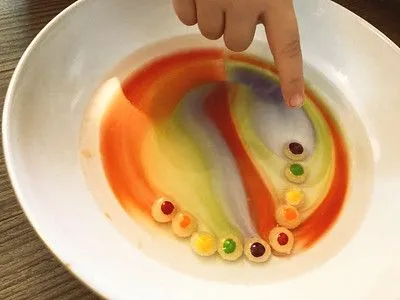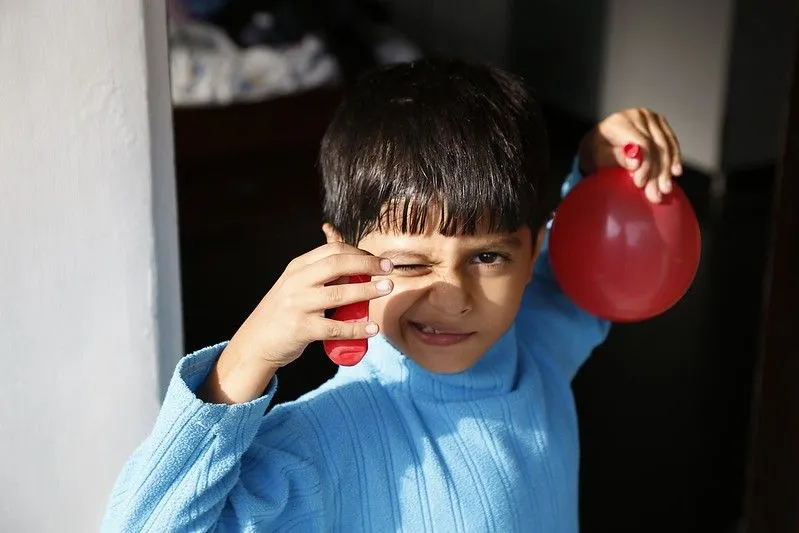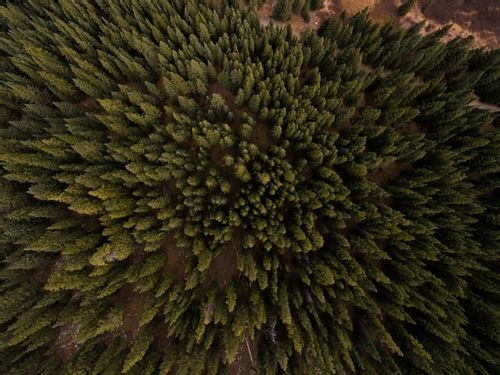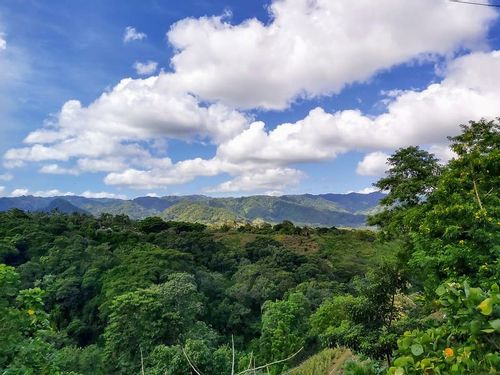FOR ALL AGES
You’d be surprised just how much science you can do around the home. Do you know how to make a rocket from Alka Seltzer, or even extract your own DNA using stuff found in the kitchen cupboard?
We’ve built up quite an archive of science fun on Kidadl. So here below is a list of recommended science experiments to try with different age groups. Have fun!
Under-fives have an insatiable curiosity about the world. They’re natural scientists. All of the following involve very little equipment and should be safe enough for young hands to get involved.
1. This article aimed at early-years kids has many fun experiments that feature the stuff we all have in our kitchens. These include:
Will it sink or will it float?
Magic dancing milk (mixing food colouring, milk and washing-up liquid)
How do clouds make rain? (see food colouring ‘rain’ drop from a shaving foam ‘cloud’)
Make a materials ‘feely’ book
Rainbow eruption (foaming reaction of baking soda and vinegar with food colouring)
Dancing worms (make jelly worms dance using the baking soda/vinegar combo)
Paper cup bubble machine

2. A second article rounds up even more simple experiments you can try with early-years kids. These include:
Grow your own rainbow (use kitchen roll and water to make an ink rainbow ‘grow’)
Dancing raisins (nothing more complex than raisins in fizzy pop)
Skittles artwork (the amazing patterns that occur when you get Skittles wet)
Clean a grubby coin
Make your own lava lamp
Change the colour of celery
Make a bouncy egg
Test what melts (needs a warm, sunny day)
3. Discover how to make a foaming fountain of elephant’s toothpaste. One to really make the kids ‘Ooo’ and ‘Ahhh’. If you’ve got some hydrogen peroxide lying around, then you can make really impressive foaming creations with just a few other common ingredients.
4. Try the egg-drop challenge. Can your kids use bubble wrap, card and other materials to stop a dropped egg smashing? Or you could try the parachute method.
5. Have a go at rigging this self-inflating balloon, which expands thanks to the carbon dioxide released when vinegar meets baking soda. The article gives tips for older children on how to alter the variables to get different results.
6. See if your kids can make a paper clip float. When they can’t show them this simple trick to make it happen. It’s an experiment in surface tension.
1. We’ve put together a list of slightly more involved experiments that’ll still wow little kids but might be more practical for older children. These include:
Make a balloon hovercraft
Make paper frogs jump using static electricity
The magical leak-proof bag (how to insert a sharp pencil into a bag of water)
Experiments with light refraction
2. Here’s a second article with experiments aimed at 5-7 year-olds. Ideas include:
Learn how germs spread, using glitter
Discover how to filter dirty water using gravel and sand
See how different types of chocolate melt at different temperatures
A DIY slime experiment
Dye flowers a new colour (similar to the celery experiment in the previous section).
3. Our article on eco-friendly activities includes a few experiments:
Make an eco-system in a bottle
Make your own laundry detergent
4. Similarly, we’ve put together an article to help children learn about the different layers of the Earth. It includes:
Make a modelling clay Earth
Make a papier-mache Earth bowl
Use layers of sand to build up an Earth model
Use a hard-boiled egg to explain the Earth’s layers
A scientific planter project
5. Is yeast really alive? It looks so, well, not alive. These experiments will show how the ingredient is really a living organism.
6. Not all stones sink. Pumice, a volcanic stone filled with air spaces, will float on water. This experiment investigates.
7. Does Mint Cool Things Down? It feels like it on the tongue, but will mint have any effect on a thermometer?
8. Does tea stain your teeth? Using egg shells as substitutes for teeth, these experiments investigate tea and other dark drinks to look at the stainin effects.
Our article on science projects for teens contains the following experiments:
Make a silver egg
Make plastic polymers from milk
How does temperature affect the rate of diffusion?
Build an Alka Seltzer rocket
Learn to take fingerprints
Measure how heart rate changes with exercise
Extract your own DNA
Make a vegetable pH indicator
Make a fire extinguisher
Learn how to bend water
Scatter light to replicate the blue sky
Make a metal ball

All of the experiments listed above are do-able with equipment and ingredients readily found around most homes. To take things to the next level, you could order one of these wonderful science kits, which include chemistry, microscopes, volcano kits, robotics, electronics and botany. Alternatively, take a look at this list of recommended STEM toys, with something for everyone from toddlers to tweens.
7 Science ‘facts’ we all get wrong
Brilliant weather-learning activities for all age groups.
Read The Disclaimer
At Kidadl we pride ourselves on offering families original ideas to make the most of time spent together at home or out and about, wherever you are in the world. We strive to recommend the very best things that are suggested by our community and are things we would do ourselves - our aim is to be the trusted friend to parents.
We try our very best, but cannot guarantee perfection. We will always aim to give you accurate information at the date of publication - however, information does change, so it’s important you do your own research, double-check and make the decision that is right for your family.
Kidadl provides inspiration to entertain and educate your children. We recognise that not all activities and ideas are appropriate and suitable for all children and families or in all circumstances. Our recommended activities are based on age but these are a guide. We recommend that these ideas are used as inspiration, that ideas are undertaken with appropriate adult supervision, and that each adult uses their own discretion and knowledge of their children to consider the safety and suitability.
Kidadl cannot accept liability for the execution of these ideas, and parental supervision is advised at all times, as safety is paramount. Anyone using the information provided by Kidadl does so at their own risk and we can not accept liability if things go wrong.
Kidadl is independent and to make our service free to you the reader we are supported by advertising.
We hope you love our recommendations for products and services! What we suggest is selected independently by the Kidadl team. If you purchase using the buy now button we may earn a small commission. This does not influence our choices. Please note: prices are correct and items are available at the time the article was published.
Kidadl has a number of affiliate partners that we work with including Amazon. Please note that Kidadl is a participant in the Amazon Services LLC Associates Program, an affiliate advertising program designed to provide a means for sites to earn advertising fees by advertising and linking to amazon.
We also link to other websites, but are not responsible for their content.
Was this article helpful?



Browse Category



We’ll send you tons of inspiration to help you find a hidden gem in your local area or plan a big day out.



Check your inbox for your latest news from us. You have subscribed to:
Remember that you can always manage your preferences or unsubscribe through the link at the foot of each newsletter.